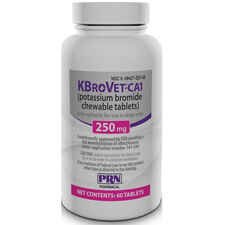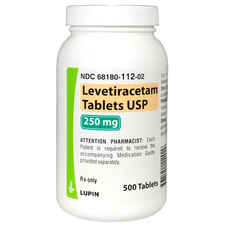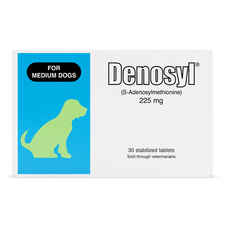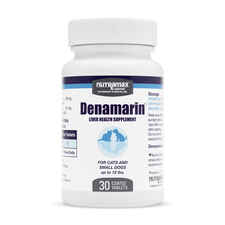How to Treat Seizures in Dogs and Cats
Doctor of Veterinary Medicine

While efforts are made to answer all questions as quickly as possible, if an immediate answer is required or if your pet is in need of urgent or emergency care, contact your pet's veterinarian immediately.
Doctor of Veterinary Medicine

You will receive an answer from Dr. Lindsay and our vet/tech team as soon as possible, usually the same day.
All answers are provided for informational or educational purposes only, and are intended to be a supplement to, and not a substitute for, the expertise and professional judgment of your pet's veterinarian.
It may be necessary to consult your pet's veterinarian regarding the applicability of any opinions or recommendations with respect to your pet's symptoms or medical condition.
CloseDoctor of Veterinary Medicine

An error has occurred, please reload the page and try again.
CloseWhile efforts are made to answer all questions as quickly as possible, if an immediate answer is required or if your pet is in need of urgent or emergency care, contact your pet's veterinarian immediately.
There is no answer related to your question
What to do if your pet is having a seizure
Seizures stress your pet and your family, but being able to take effective action helps your pet and your family. These are some guidelines:
- Remain calm and speak to your pet in a soft, comforting voice.
- Put light pressure on your pet's eyeballs for a minute if it is safe for you to do so.
- Prevent injury and protect your pet from damaging his or her head by moving objects away from your pet. Do not try to move your pet during a seizure because you may be bitten.
- Do not approach your pet's head or the mouth because you may be bitten.
- Do not put medication in your pet's mouth while he or she is having a seizure or unable to swallow.
- Clean up urine or feces without punishing your pet.
- Document the event and what led up to the event in a seizure diary.
- Get emergency help if seizures last more than five minutes or if a second seizure occurs before the brain has completely recovered.
- Give medications as prescribed by your veterinarian, such as rectal Diazepam.
Place pressure on your pet's eyeballs
Pushing on the eyelids enough to depress the eyeball slightly for 10-60 seconds stimulates the vagus nerve. The vagus increases signals from the calming (parasympathetic) segment of the nervous system and this slows down rapid nerve cell activity characteristic of seizures. If your pet is having a seizure, eyeball pressure helps decrease seizure duration.
Applying eyeball pressure for a minute or two every day before your pet falls to sleep, may help decrease the frequency and severity of seizures. Eyeball pressure also lowers blood pressure.
Treatment options for pets with seizures
Seizures in dogs and cats that occur more often than once a month, occur with ferocity, last for more than 90 seconds, or result in aggressive behavior require treatment.
Treatment for your pet's seizures should include steps that:
- Strengthen the brain
- Strengthen the liver
- Avoid toxins
- Provide a stable environment
- Give medication to prevent uncontrolled brain activity
- Provide surgical relief to brachycephalic dogs
- Include alternative therapies
When the tendency to develop seizures is inherited, it is best to neuter or spay affected pets.
Strengthen your pet's brain
Supplements that strengthen your pet's brain and build healthy nerve cells and neurotransmitters decrease the likelihood of seizures:
- Cholodin helps make the brain neurotransmitter acetylcholine.
- SAMe in Denosyl provides antioxidants that benefit the brain (and liver).
- Super Pure Omega 3 contains Omega 3 fatty acids that help normalize brain cell membranes.
- Be Well for Dogs and Be Well for Cats contains Omega 3 fatty acids that help normalize brain cell membranes.
Strengthen your pet's liver
The liver is responsible for removing toxins from the blood. It also controls blood glucose and the amount and type of blood proteins. When your pet's liver is weak and functions poorly, materials enter the bloodstream that can penetrate the blood brain barrier and trigger seizures. To strengthen your pet's liver and keep the blood that circulates through the brain healthy, do the following:
- Feed no chemicals, fillers, or dyes which the liver will have to process.
- Provide natural, wholesome pet food.
- Provide filtered water.
- Supplement with milk thistle (silymarin or silybum) such as Super VitaChews Soft Chews.
- Supplement with SAMe, found in Denosyl, to provide antioxidants and liver purifying glutathione.
- Use homeopathic medications such as Hepar from HeelUSA.
Keep your pet away from toxins
Exposure to poisons or toxins stresses your pet's liver, predisposing him or her to seizures. The following are potential toxin exposures:
- garages,
- workshops,
- bathrooms,
- new carpets,
- recently painted walls,
- recently treated decks,
- lawns recently treated with fertilizers, herbicides, or pesticides.
Provide a stable environment for your pet
Most pets with seizures have difficulty adjusting to even small changes in their environment, exercise level, food, or medication. Among the events that can increase the tendency for these pets to have seizures are:
- changes in the family structure, such as the addition of a baby or another pet,
- traveling,
- loud music,
- loud holiday company,
- missed meals,
- late bedtime or changes in sleep cycle,
- sudden changes in any medication, and
- changes in the amount of exercise.
Give your pet medication to prevent seizures
The two most commonly used prescription anti-seizure medications for pets are phenobarbital (PB) and potassium bromide (KBr or K-BroVet Potassium Bromide). Diazepam is not used to prevent seizures in dogs because the effects last about 20 minutes. Cats with epilepsy can be given Diazepam as well as PB and KBr because the effects last 20 hours in cats. Primidone, which is metabolized to phenobarbital in the body, is prescribed for dogs, but many veterinarians do not recommend it for cats.
For pets with primary or idiopathic seizures, anticonvulsant medication addresses the problem. For pets with secondary seizures, a group that includes most cats, anticonvulsant medication may resolve the symptoms but it doesn't address the cause.
Most pets that start on anti-seizure medications must take them for life.
Effectiveness of BP and KBr
Even when diets, dosages, and all else remains ideal, between 20-30% of dogs are not helped by either PB or KBr.
Side effects of BP, KBr, and Primidone
Unfortunately, PB, KBr, and Primidone and may have serious side effects in your pet: liver damage, drowsiness, weight gain, change in personality, and interfering with bone marrow so that your pet has insufficient infection-fighting white blood cells and blood clotting cells (thrombocytes).
Decreasing the side effects
To decrease the possibility of side effects—which are more severe as the dosage is increased—some veterinarians recommend using smaller amounts of two medications rather than a large amount of one medication. Veterinarians also recommend avoiding toxins and using supplements to support the brain and liver so that medication dosages can be kept to a minimum.
PB, KBr, and Primidone: Slow to act
If your pet is diagnosed with seizures and prescribed these medications, be aware that PB and KBr are slow to become effective. Phenobarbital takes two weeks to reach a steady state and KBr takes three to four months. Periodic blood tests are necessary to measure your pet's blood levels.
KBr and salt intake
For pets on KBr, it's important not to change the amount of salt in the diet. Because KBr is a salt, it competes with normal table salt to remain in the body. If your pet's salt intake suddenly increases because you switch to a different pet food or give salty treats such as hot dogs, luncheon meats, or ham, the kidneys recognize there is sudden increase in salt. To control the salt level, the kidneys eliminate KBr along with sodium chloride. This elimination lowers the therapeutic blood levels of KBr and can lead to seizures.
BP and primidone affect hormones and other medications
Phenobarbital (PB) and Primidone can lower thyroid hormones (T4) and increase thyroid stimulating hormone (TSH), creating hypothyroidism in dogs. In addition to affecting hormones, PB can affect and be affected by other medications. For example, PB decreases the effect of these medications: oral anticoagulants such as warfarin, steroids such as Prednisone, antibiotics Doxycycline and Metronidazole, and the asthma drug Theophylline.
Anti-seizure medications that don't work in pets
Do not be tempted to try Phenytoin, valproic acid, and Carbamazepine. These are effective human anti-seizure medications but they do not work the same in pets as they do in people.
Medications that should never be given to pets with epilepsy
Some medications increase the possibility that pets will have seizures. These prescription medications should not ever be given: Acepromazine, Ketamine, and Xylazine (Rompun).
Which pets should take anti-seizure medication?
Anti-seizure medication is recommended for pets that have more than one seizure every four to six weeks, have cluster seizures, have extremely violent seizures, are less than a year old when seizures begin, have structural problems within the brain causing the seizure (hydrocephalus, cancer), or are aggressive during recovery.
Provide surgical relief to brachycephalic dogs
Surgery helps brachycephalic dogs with short, flat noses so that more oxygen reaches their brains. The surgery shortens the soft palate so that the throat doesn't collapse and widens the tiny nostrils so that more air enters the nose. Among the breeds that may benefit are English Bulldogs, Pugs, Pekingese, Shih Tzus, and Boston Terriers.
Consider alternative therapies for your pet
Holistic veterinarians recommend the following to decrease the severity and frequency of seizures:
- NaturVet Quiet Moments Calming Aid Plus Melatonin
- Chinese herbs that improve liver health, such as Tian
- Ma Gou Teng Yin
- Gold bead implants at acupuncture points
- Homeopathic Aconitum 30 C or Cocculus 30 C
- Magnesium 25 mg/10 pounds body weight for pets with healthy kidneys
- Vitamin E 25 mg/10 lb
- Taurine: 60 mg/10 lb
- Melatonin 1-3 mg at bedtime
Do not attempt to put medication in your pet's mouth during a seizure
It is dangerous for you and your pet to place anything in your pet's mouth during the seizure. Pets having a seizure don't swallow normally and medication put in their mouths can run down into the lungs. It is also dangerous for you, the pet guardian, because your pet may bite during a seizure. Diazepam (Rx) can be given rectally to a seizing pet. Homeopathic medications, such as Aconitum, Cocculus, and Nux Vomica, can be given rectally.
If your pet has gold beads implanted at acupuncture points, they can be massaged during a seizure.
Pets are a lot like people, so keep them healthy as best as you can by following the same advice as you would for a human having a seizure.




























